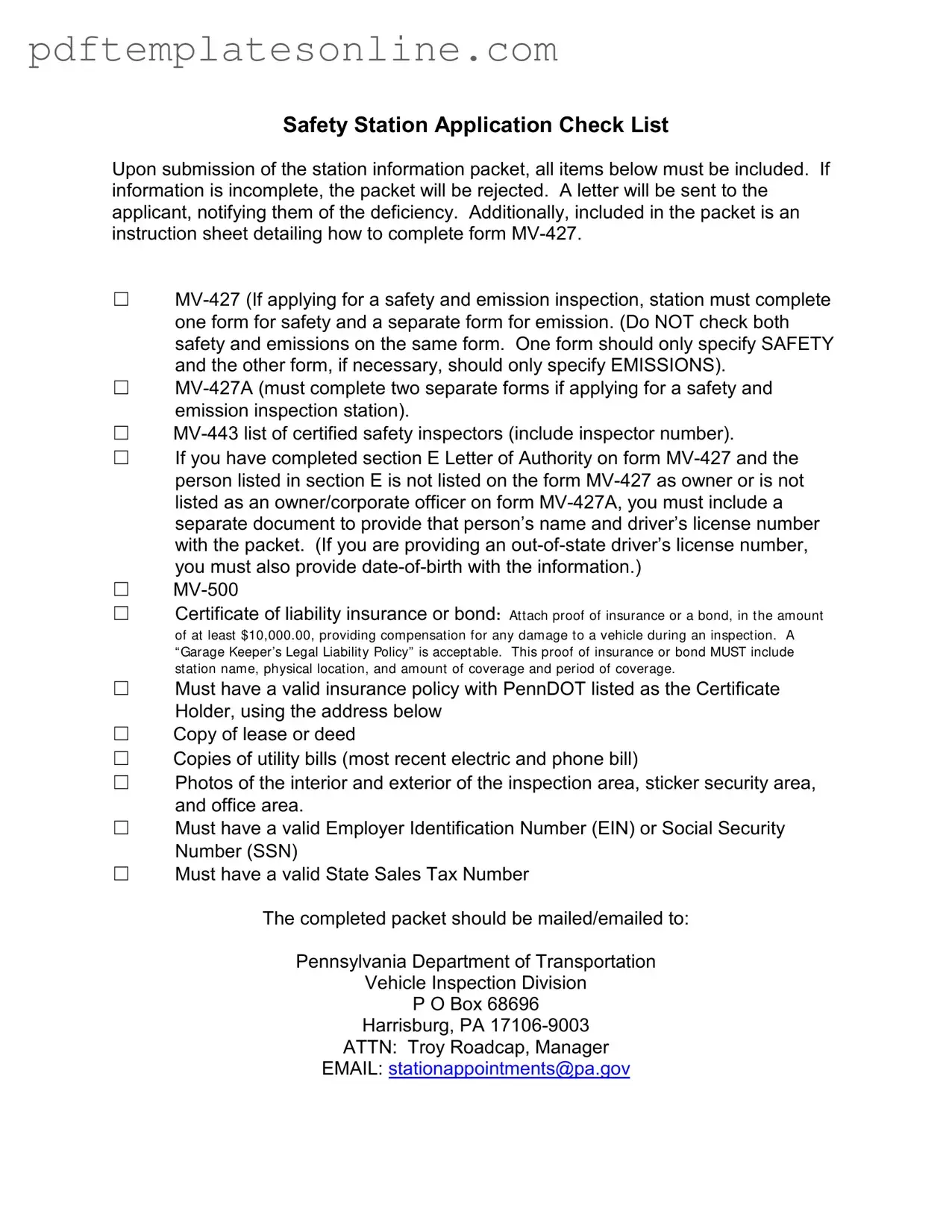Filling out the MV-427 form can be a straightforward process, but many applicants make common mistakes that can lead to delays or rejections. One frequent error is failing to submit separate forms for safety and emissions inspections. The instructions clearly state that one form should only specify safety, while another should be used for emissions. Ignoring this requirement can result in an incomplete application.
Another common mistake is neglecting to provide the necessary supporting documents. Applicants often forget to include the MV-443 list of certified safety inspectors or the certificate of liability insurance. Without these documents, the application packet will be considered incomplete, leading to rejection and additional time spent rectifying the situation.
Inaccurate information on the application is another pitfall. For example, if the owner’s name or driver’s license number is incorrect, it can invalidate the application. It is crucial to double-check all personal information and ensure it matches official records. Additionally, applicants sometimes fail to provide a valid Employer Identification Number (EIN) or Social Security Number (SSN), which is essential for processing the application.
Some applicants mistakenly believe they can use a post office box as their business address. However, the form specifically requires a physical street address. This oversight can lead to complications, as the application will be deemed invalid if the address is not compliant with the guidelines.
Lastly, many individuals overlook the requirement for a signature. The application must be signed by the owner or a corporate officer at the time of submission. If Section E is completed, the authorized person must also sign the application. Omitting the signature can result in immediate rejection of the application.
By being aware of these common mistakes, applicants can improve their chances of submitting a complete and accurate MV-427 form, ensuring a smoother application process.
